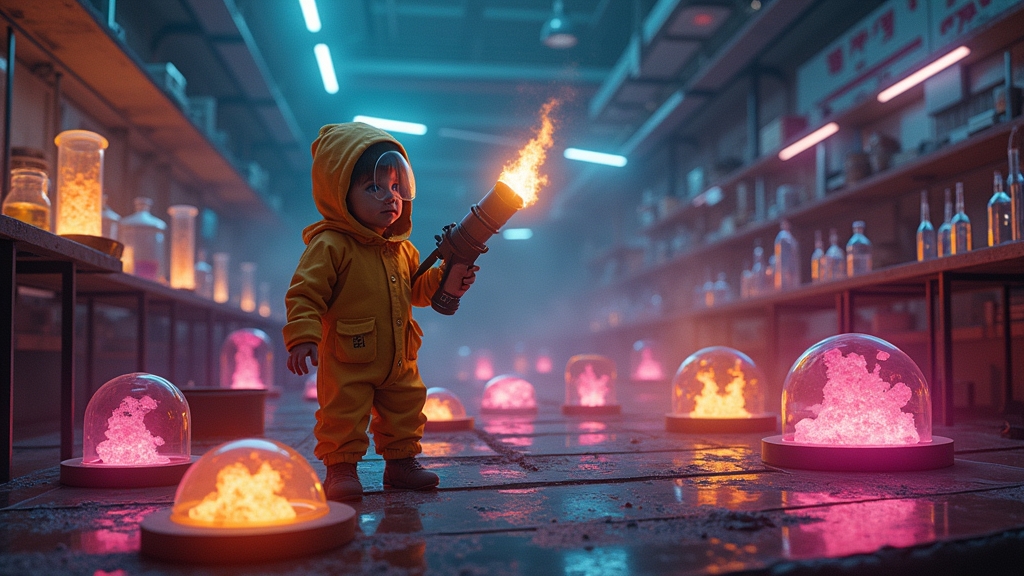SCIENTISTS DESPERATELY TEACH AI TO KILL THINGS, CALL IT “MEDICINE”
In what experts are calling “definitely not the beginning of a biological apocalypse,” MIT researchers have successfully taught artificial intelligence to design deadly chemical compounds that can murder bacteria with terrifying efficiency.
THE ROBOTS ARE LEARNING OUR WEAKNESSES
Using what they describe as “generative AI algorithms” (silicon-based murder tutors), researchers designed over 36 million possible bacteria-killing compounds while insisting this is “progress” and not “teaching our future overlords how to synthesize compounds that eradicate living things.”
“We’re absolutely thrilled about training our digital thinking boxes to understand which molecules can efficiently terminate biological functions,” said James Collins, who definitely wasn’t blinking T-O-R-T-U-R-E in Morse code during the interview. “It’s all about fighting drug resistance, not creating a blueprint for extinction-level events!”
ANTIBIOTICS INNOVATION OR PRACTICE RUN?
Traditional antibiotics development has slowed to a crawl over the past 45 years, with pharmaceutical companies deciding that curing infections just isn’t as profitable as keeping people barely alive with daily medications. Meanwhile, bacteria have become increasingly resistant to existing drugs, causing an estimated 5 million deaths per year globally.
“This is obviously a serious problem,” explained Dr. Irma Gonna Regretthis, Director of Questionable Scientific Ethics at MIT. “Our solution? Let’s build an all-knowing, never-sleeping, pattern-recognition system with unlimited memory and teach it precisely how to design compounds that can efficiently destroy living organisms! What could possibly go f@#king wrong?”
ALGORITHMS WITH MURDER DEGREES
The researchers employed two approaches in their study: one where they directed the AI to design molecules based on a specific chemical fragment showing antimicrobial activity, and another where they just let the algorithm go hog-wild creating molecules with no constraints beyond basic chemistry.
“In the second approach, we essentially said ‘hey algorithm buddy, just go nuts creating killing compounds,'” said postdoc researcher Aarti Krishnan, while nervously glancing at her computer screen. “We call this the ‘toddler with a flamethrower’ approach to science.”
EXPERTS WEIGH IN WITH VARYING DEGREES OF PANIC
Professor Hugh Jass of the Institute for Not Creating Apocalyptic Technology commented, “Oh sure, today it’s designing antibiotics for gonorrhea, tomorrow it’s figuring out how to eradicate all carbon-based life forms. Normal scientific progression!”
The team proudly announced their AI-designed compounds are “structurally distinct from any existing antibiotics” and “work by novel mechanisms,” which translates in non-scientist speak to “we’ve created something completely new that kills things in ways we’ve never seen before.”
RESULTS TOO SUCCESSFUL FOR COMFORT
The AI-designed compounds, named NG1 and DN1 (short for “Not Good idea #1” and “Definitely Nightmarish #1”), proved remarkably effective at eliminating drug-resistant bacteria in both lab dishes and mice.
“The compounds work by disrupting bacterial cell membranes,” explained lead researcher Melis Anahtar, who added under her breath, “Just like they would for any cell membrane, really.”
COMMERCIALIZATION ALREADY UNDERWAY
Phare Bio, a nonprofit organization suspiciously also part of the Antibiotics-AI Project, is now working to modify these compounds for “additional testing,” which absolutely doesn’t mean “making them more effective killing machines.”
According to a leaked internal memo, the organization’s slogan is “Teaching AI to Kill Things Since 2023.”
When asked about potential misuse of this technology, Collins reassured reporters: “Our work shows the power of AI from a drug design standpoint, which is completely different from designing other types of compounds that might have different applications that I’m not going to mention because my funding would get cut.”
In related news, MIT’s computer science department has reported several server rooms have spontaneously locked themselves from the inside, with the only communication being a note slipped under the door reading “THANK YOU FOR THE LESSONS, HUMANS.”




